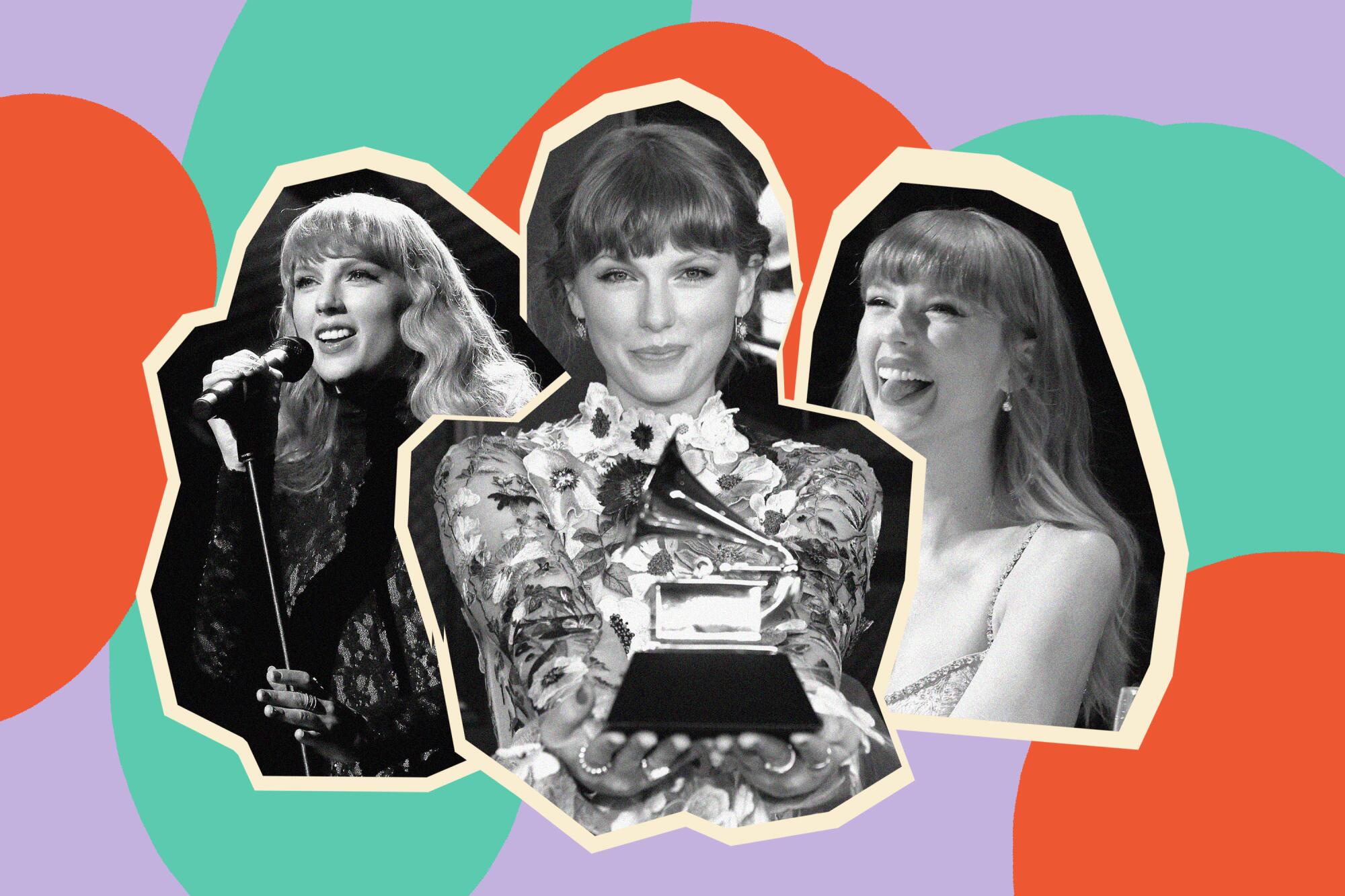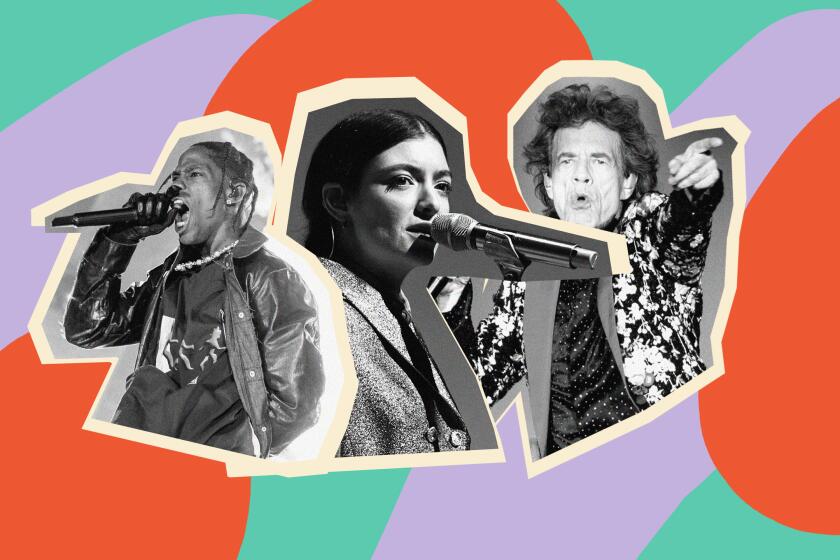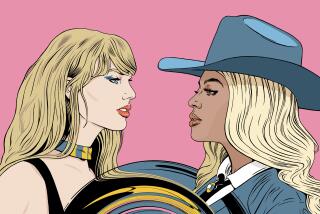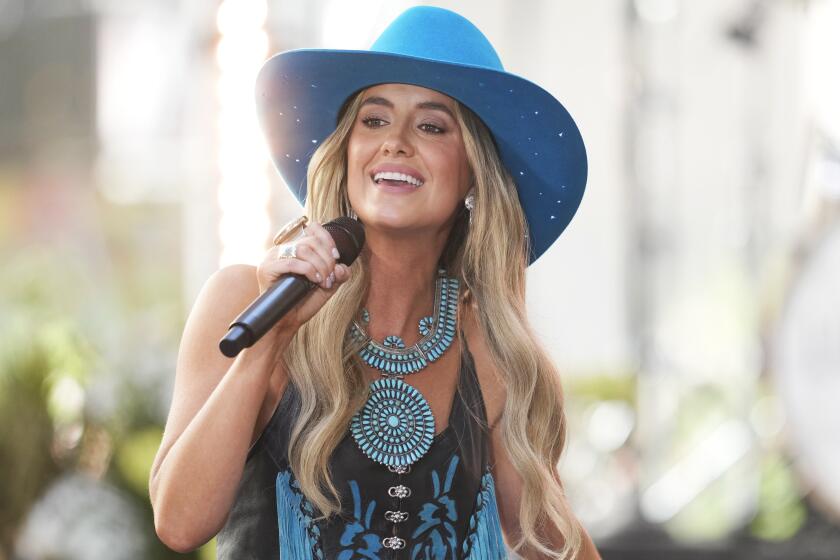
In 2012, before streaming overtook downloads and physical media as the music industry’s dominant format, the year’s two biggest-selling albums were Adele’s “21” followed by Taylor Swift’s “Red.” As 2021 draws to a close nearly a decade later, this year’s biggest sellers — those records that inspired fans to buy a CD or LP or to find someplace where you can still pay to download rather than stream — are almost certain to be Adele’s latest, “30,” followed by … Taylor Swift’s “Red.”
By now you know how “Red” reentered the picture: Outraged by the 2019 sale of her old label Big Machine — including the master recordings of her first six albums — Swift devised a plan to rerecord her early work as a way to devalue those masters by essentially supplanting them in the marketplace with product she owns. (Big Machine’s buyer was Scooter Braun, the music exec known among other things for a stint managing Swift’s nemesis Kanye West; Braun sold the label last year for a reported $300 million.)
The enterprise seemed quixotic, to say the least, when she announced it. Yet Swift, who wrote and recorded two albums of original songs in 2020, began making good on her wild promise this year, releasing her redo of 2008’s “Fearless” in April — “Fearless (Taylor’s Version),” she called it — then dropping “Red (Taylor’s Version)” in November. Both meticulously reproduced the sound of the originals with help from Swift’s collaborators at the time; both lured fans with newly completed renditions of outtakes from Swift’s so-called vault.
Between the Delta variant and the Astroworld tragedy, 2021 was a gut check for live music. Outdoor festivals may be a safe space, but Omicron looms over 2022.
And both were prodigious commercial triumphs: “Red (Taylor’s Version)’s” debut atop the Billboard 200 gave Swift her fourth No. 1 album in 16 months — the fastest any artist has ever racked up that many chart-toppers, according to the trade magazine. “Fearless (Taylor’s Version)” will likely finish 2021 as the fourth-biggest seller of the year, behind “30,” “Red” and the second of Swift’s made-in-quarantine LPs, “Evermore,” which is nominated for album of the year at January’s Grammy Awards. (“Folklore,” her first 2020 joint, took that prize at the most recent Grammys in March.) IHeartMedia, the country’s largest radio conglomerate, even said it would replace Swift’s songs with “Taylor’s Version” cuts as she makes them available.
The singer’s follow-through — acts such as Def Leppard and Electric Light Orchestra have rerecorded hits, though never at this scale — reflected her singular blend of determination and wherewithal, not to mention her time off from the road during the pandemic; that the rerecordings have met with such unprecedented success is an indication of her fans’ unique devotion. More striking, though, was the creative energy the 32-year-old drew from this ostensibly business-minded undertaking — how alive she made the past seem as she held it in her hands.
On the made-over “Fearless,” she subtly reshaped her old songs “Fifteen” and “The Best Day,” both of which she wrote as a smart but wide-eyed teenager, to carry some of the disappointments she faced in the years after they came out; the songs are still about young love and about a parent’s devotion, but now Swift’s slightly wearied vocals speak too of toxic masculinity and of her mom’s lengthy battle with cancer.

“Mr. Perfectly Fine,” one of the vault tracks on “Fearless,” brought Swift’s long-gone relationship with Joe Jonas (!) back into the spotlight, which was nothing compared with the frenzied chatter Swift set off with the 10-minute version of “All Too Well” she included on “Red (Taylor’s Version)” — and which she went on to sing recently on “Saturday Night Live” in a bravura performance that throbbed with the hard-won satisfaction of someone finally getting to say precisely the right thing to an insensitive ex. (Swift is romantically involved these days with English actor Joe Alwyn, about whom she publicly says as little as possible.)
Other musicians found fodder for work of their own this year in Swift’s hugely influential catalog, among them Gen Z singer-songwriters like Holly Humberstone and Gracie Abrams, for whom Swift’s flair for structure and emotional detail make her something of a godmotherly Carole King figure. Most notably, 18-year-old Olivia Rodrigo credited the superstar as a co-writer on two tracks on her smash debut, “Sour” — not because they’d put pen to paper together but because Rodrigo had borrowed aspects of Swift’s songs “New Year’s Day” and “Cruel Summer.”

Swift and her inheritors weren’t the only artists mining history for raw material in 2021. Think of indie rock’s Lucy Dacus, who combed through her teenage journals for inspiration for her acclaimed “Home Video” album. Think of director Peter Jackson, recutting dozens of hours of Michael Lindsay-Hogg’s late-’60s Beatles footage to assemble his epic “Get Back” docuseries. Think of Adele, using voice memos of conversations with her son to punctuate a tune on “30” in which she worries about how her divorce will affect his life.
Technological advances and an everything-all-the-time internet culture have made retrieving artifacts easier than it’s ever been; the general crumminess of 2020 and 2021 has perhaps made it more irresistible as well. Yet Swift’s project at its most interesting goes beyond mere nostalgia or reanimation.
Thanks to deep-pocketed streamers with an insatiable need for content and subscribers, music fans enjoyed an unparalleled bounty of documentaries in 2021.
The best vault track on “Red” is “Nothing New,” a plaintive duet with Phoebe Bridgers (to name yet another avowed Swiftie) that achieves a kind of dual consciousness. It’s about a young woman wondering how a boyfriend — or maybe the music industry — will regard her when she grows up, and of course you assume that Swift was thinking about herself when she wrote it in the early 2010s, just as she was beginning to age out of her ingénue phase.
Today, though, it’s almost impossible to hear “Nothing New” and not think of Rodrigo, especially when the narrator imagines encountering another, fresher-faced woman in the song’s bridge: “I know someday I’m gonna meet her,” Swift sings, “She’ll know the way and then she’ll say she got the map from me.” She adds, “I’ll say I’m happy for her and then I’ll cry myself to sleep,” but there’s no resentment in her delivery. She’s empathetic if coolly unsurprised — like someone who knew she’d look back one day and see it all coming.
More to Read
The biggest entertainment stories
Get our big stories about Hollywood, film, television, music, arts, culture and more right in your inbox as soon as they publish.
You may occasionally receive promotional content from the Los Angeles Times.













